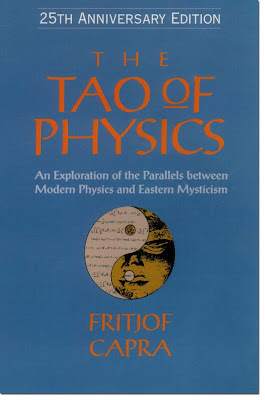Last Words of the Tathagata
216. Then the Bhagava said to the Venerable Ananda:
It may happen that (some among) you have this thought: 'The Doctrine; (lit, the word) is bereft of the Teacher of the Doctrine; our Teacher is no more.' But Ananda, it should not be so considered. Ananda, the Doctrine and Discipline I have taught and laid down to all of you will be your Teacher when I am gone.
Ananda, when I have passed away, bhikkhus should not address one another as they do at present by the term 'avuso' (Friend) (irrespective of seniority). Ananda, the senior bhikkhus should address the junior bhikkhus by name, or by family name, or by the term 'avuso'. And the junior bhikkhus should address the senior bhikkhus by the term 'bhante' or 'ayasma' (Venerable Sir).
Ananda, after I have passed away, the Samgha, the Order of the bhikkhus, may, if it wishes to, abolish lesser and minor Rules of Discipline.
Ananda, after I have passed away, let the Brahma penalty be imposed upon Bhikkhu Channa.
"But, Venerable Sir, what is the Brahma penalty?"
Ananda, let Bhikkhu Channa say whatever he wishes to. The bhikkhus should neither advise him nor admonish him, nor deter him.
217. Then the Bhagava addressed the bhikkhus thus:
O Bhikkhus, if any bhikkhu should happen to have any uncertainty or perplexity regarding the Buddha, or the Dhamma (the Teaching), or the Samgha (the Order of bhikkhus), or Magga, or the Practice, then, bhikkhus, ask (me) questions. Do not let yourselves feel regret later with the thought that 'even though our Teacher was (with us) in our very presence, we were not able to ask him questions personally in return.'
When this was said, the bhikkhus remained silent. ..............
For a third time, the Bhagava said:
O Bhikkhus, if any bhikkhu should happen to have any uncertainty or perplexity regarding the Buddha, or the Dhamma, or the Samgha, or Magga, or the Practice, then, bhikkhus, ask (me) questions. Do not let yourselves feel regret later with the thought that 'even though our Teacher was (with us) in our very presence, we were not able to ask him questions personally in return.'
For the third time, too, the bhikkhus remained silent.
Then the Bhagava said to the bhikkhus:
O Bhikkhus, it may be that you do not ask questions out of respect for the Teacher. Then, bhikkhus, let a bhikkhu tell a companion (his uncertainty or perplexity).
Even when this was said, the bhikkhus continued to remain silent.
Then the Venerable Ananda said to the Bhagava:
"Wonderful it is, Venerable Sir! Marvellous it is, Venerable Sir! I believe that in this community of bhikkhus not a single bhikkhu has uncertainty or perplexity regarding the Buddha, or the Dhamma, or the Samgha, or Magga, or the Practice."
Ananda, you say this only out of faith. Indeed, Ananda, the Tathagata knows for certain that in this community of bhikkhus not a single bhikkhu has uncertainty or perplexity regarding the Buddha, or the Dhamma, or the Samgha, or Magga, or the Practice.
Ananda, amongst these five hundred bhikkhus, even the least (in attainment) is a Sotapanna, a Stream-enterer, not liable to be reborn in any apaya realm of misery, assured (of reaching desirable realms of existence or of teaching the end of dukkha), bound for (the three higher levels of Insight, culminating in) Enlightenment.
218. Then the Bhagava said to the bhikkhus:
O Bhikkhus, I say this now to you: "All conditioned and compounded things (sankhara) have the nature of decay and disintegration. With mindfulness endeavour diligently (to complete the task)"
These were the last words of the Tathagata

Part Six: The Passing Away
The Blessed One's Final Exhortation
1. Now the Blessed One spoke to the Venerable Ananda, saying: "It may be, Ananda, that to some among you the thought will come: 'Ended is the word of the Master; we have a Master no longer.' But it should not, Ananda, be so considered. For that which I have proclaimed and made known as the Dhamma and the Discipline, that shall be your Master when I am gone.
2. "And, Ananda, whereas now the bhikkhus address one another as 'friend,' let it not be so when I am gone. The senior bhikkhus, Ananda, may address the junior ones by their name, their family name, or as 'friend'; but the junior bhikkhus should address the senior ones as 'venerable sir' or 'your reverence.'
3. "If it is desired, Ananda, the Sangha may, when I am gone, abolish the lesser and minor rules.
4. "Ananda, when I am gone, let the higher penalty be imposed upon the bhikkhu Channa."
"But what, Lord, is the higher penalty?"
"The bhikkhu Channa, Ananda, may say what he will, but the bhikkhus should neither converse with him, nor exhort him, nor admonish him."
5. Then the Blessed One addressed the bhikkhus, saying: "It may be, bhikkhus, that one of you is in doubt or perplexity as to the Buddha, the Dhamma, or the Sangha, the path or the practice. Then question, bhikkhus! Do not be given to remorse later on with the thought: 'The Master was with us face to face, yet face to face we failed to ask him.'"
6. But when this was said, the bhikkhus were silent. And yet a second and a third time the Blessed One said to them: "It may be, bhikkhus, that one of you is in doubt or perplexity as to the Buddha, the Dhamma, or the Sangha, the path or the practice. Then question, bhikkhus! Do not be given to remorse later on with the thought: 'The Master was with us face to face, yet face to face we failed to ask him.'"
And for a second and a third time the bhikkhus were silent. Then the Blessed One said to them: "It may be, bhikkhus, out of respect for the Master that you ask no questions. Then, bhikkhus, let friend communicate it to friend." Yet still the bhikkhus were silent.
7. And the Venerable Ananda spoke to the Blessed One, saying: "Marvellous it is, O Lord, most wonderful it is! This faith I have in the community of bhikkhus, that not even one bhikkhu is in doubt or perplexity as to the Buddha, the Dhamma, or the Sangha, the path or the practice."
"Out of faith, Ananda, you speak thus. But here, Ananda, the Tathagata knows for certain that among this community of bhikkhus there is not even one bhikkhu who is in doubt or perplexity as to the Buddha, the Dhamma, or the Sangha, the path or the practice. For, Ananda, among these five hundred bhikkhus even the lowest is a stream-enterer, secure from downfall, assured, and bound for enlightenment."
8. And the Blessed One addressed the bhikkhus, saying: "Behold now, bhikkhus, I exhort you: All compounded things are subject to vanish. Strive with earnestness!"
This was the last word of the Tathagata.
How the Blessed One Passed into Nibbana
9. And the Blessed One entered the first jhana. Rising from the first jhana, he entered the second jhana. Rising from the second jhana, he entered the third jhana. Rising from the third jhana, he entered the fourth jhana. And rising out of the fourth jhana, he entered the sphere of infinite space. Rising from the attainment of the sphere of infinite space, he entered the sphere of infinite consciousness. Rising from the attainment of the sphere of infinite consciousness, he entered the sphere of nothingness. Rising from the attainment of the sphere of nothingness, he entered the sphere of neither-perception-nor-non-perception. And rising out of the attainment of the sphere of neither-perception-nor-non-perception, he attained to the cessation of perception and feeling.
10. And the Venerable Ananda spoke to the Venerable Anuruddha, saying: "Venerable Anuruddha, the Blessed One has passed away."
"No, friend Ananda, the Blessed One has not passed away. He has entered the state of the cessation of perception and feeling."
11. Then the Blessed One, rising from the cessation of perception and feeling, entered the sphere of neither-perception-nor-non-perception. Rising from the attainment of the sphere of neither-perception-nor-non-perception, he entered the sphere of nothingness. Rising from the attainment of the sphere of nothingness, he entered the sphere of infinite consciousness. Rising from the attainment of the sphere of infinite consciousness, he entered the sphere of infinite space. Rising from the attainment of the sphere of infinite space, he entered the fourth jhana. Rising from the fourth jhana, he entered the third jhana. Rising from the third jhana, he entered the second jhana. Rising from the second jhana, he entered the first jhana.
Rising from the first jhana, he entered the second jhana. Rising from the second jhana, he entered the third jhana. Rising from the third jhana, he entered the fourth jhana. And, rising from the fourth jhana, the Blessed One immediately passed away.













.jpg)




































